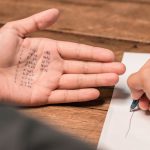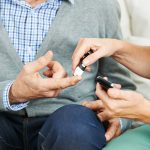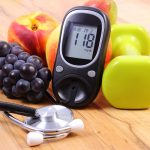A Naturopathic Approach to DM – Part 1
The Vital Conversation
James Sensenig, ND
Mona Morstein, ND, DHANP
This article joins a series of articles in NDNR that are based on transcripts of the Naturopathic Medicine Institute (NMI)’s Wednesday morning call-in program, The Vital Conversation. The program is hosted by senior Vitalists to enhance the ability of naturopathic physicians to practice as vitalist naturopathic doctors. In this lightly edited transcript (by Emily Kane, ND), the first part of a 2-part conversation, Drs Sensenig and Morstein discuss a naturopathic approach to treating patients with diabetes. The conversation took place on November 29, 2017.
Dr Sensenig: Welcome to the Vital Conversation. Today’s guest is Dr Mona Morstein, who graduated in 1988 from NCNM, now known as the National University of Natural Medicine (NUNM), in Portland, Oregon. She did a residency there for a year, then went into practice in Montana for 13 years. After that, she became a faculty member at Southwest College in Tempe, Arizona, while maintaining a small practice. She was at Southwest for 11 years and then went back into private practice.
Dr Morstein: Thank you for having me!
Dr Sensenig: I’ve heard that you were considered to be among the most vitalistic teachers among the faculty at Southwest. Why do people say that about you?
Dr Morstein: When I went to naturopathic medical school, I had an entire year of instruction from Dr Jared Zeff. He became my personal mentor. I fell in love with naturopathic medicine. Later, when I was teaching, I wanted to impart a core understanding of how to practice our medicine in a naturopathic and vitalistic way by using nutrition and other health basics. Sometimes I would ask students on the clinic shift, “What if a patient comes in who has a cold or flu. What’s the first thing you want to do with them?” They would invariably say, “Give them vitamin C or Echinacea.” I would say, “No, no, no!” It’s so much fun to teach students because I get to remind them that health comes from the gut. So, I’d say, “First we have to help them clean their gut.”
I love teaching and being part of influencing a new generation of physicians who will practice from a deep understanding of the body. I want all my students (and now all my patients) to look at health naturopathically.
Dr Sensenig: What is it about naturopathic medicine that you fell in love with?
Passion in Practice
Dr Morstein: When I lived in Montana, I noticed that when I was driving early in the morning, or at twilight, it was common to see a deer or a group of deer, and maybe an elk if I was lucky. It’s always exciting to see animals in the wild. If someone was driving early in the morning and saw a deer and didn’t get excited, it would be time to leave Montana. I feel that same kind of thrill when patients connect to their self-care. For me, every time I have a patient return to health, and learn about an advantageous diet, and how they fit into their overall environment, and how that connection with their best life is what allows them to become healthy and stay healthy, it’s very exciting. It’s just as exciting after all these years as it was with my very first patient in private practice.
Being in love with naturopathic medicine is easy. I feel so lucky to see people and their health in such a comprehensive, meaningful way. By using all of the principles I’ve learned, I can not only uncover the obstacles to their health; I also have the ability to educate them in self-care. As I educate them, I have the ability to motivate them and work with them to implement these necessary health-promoting changes.
I request a diet diary from every single one of my patients. I do an intake, then send them home to collect more data. At the second visit, I start to offer suggestions for improving their diet. I have around 8 different diet plans. After so long in practice, I know every word of these; I could do it in my sleep. You could call it drudgery to go over the same thing with every patient, but I think it’s exciting to get every new patient motivated about restoration of health. Now they understand that when they eat the old way, their asthma gets worse. It excites me to see my new patients have that “aha” moment that can change their lives and to become healthy once again.
Dr Sensenig: So many of our colleagues are passionate like you are, even after decades of practice. It’s not so much what you’re doing; it’s also the outcome of what you’re doing. Our passion is in seeing the healing and the changes we see in the people who trust us with their health. Our advice is hopefully helping them to restore their health.
It’s that change in them – that outcome that they are looking for and that we are also looking for – that keeps us going, as opposed to doing the diet diary per se.
I’m generalizing here, but think of a conventional medical doctor who does the same thing over and over again. I mean, how many EKGs can you do, or how many stress tests can you do, or how many times can you tell somebody they need another beta-blocker or statin? That sounds like drudgery to me.
Dr Morstein: I agree. I even imagine a pediatrician lying in bed at night saying, “Well, I prescribed 20 antibiotics for ear infections today… I did a good job.”
Dr Sensenig: I had a pediatrician as a patient once who had 2 young girls at the time. She worked at a famous medical school right down the street. I got to know her fairly well over time. When I finally had enough rapport with her, I said, “Let me ask you a question. If you were not doing well-child exams, prescribing antibiotics, and giving immunizations, what would you do?” She couldn’t answer me right away. Then she said, “Well, actually that’s just about all we do. Depending on the issue the child has, we send them to the pediatric gastroenterologist, or the pediatric neurologist, or the pediatric dermatologist, etc.”
She was telling me, actually admitting to me, that all she does in a day is well-child visits, immunizations, and antibiotics for ear infections. Sounds boring. You can say that about almost any specialty.
You are well known for your work in diabetes. How did that come about?
Dr Morstein: I actually missed my first patient with a very acute onset of type 2 diabetes. I was new to practice, only a couple of years out of school. As I recall, I had never seen a diabetic patient in the ‘80s at school, because we were just not yet getting into the big obesity epidemic that began during the low-fat, high-carb 90s.
So, I missed my first patient with type 2 diabetes. When I discovered that, it was a huge shock to my confidence, and not just in an ego way. It was a concern about whether I would be a safe practitioner for my patients. They were putting their health and even their life in my hands, and I had to determine if I was up to the job.
I really wanted to stay with being a physician, so I made a commitment that I would never, ever, miss any other diabetic patient in my life and that I would excel in my knowledge in this particular condition. That’s what I set about to do. Because of a crisis situation, and with a lot of hard work, I was able to turn it around and regain my confidence.
A Cultural Crisis
Dr Sensenig: It wasn’t only a personal crisis, but also what might be called a cultural crisis. Diabetes is through the roof! When I was a kid, diabetes was a disease of old people. You would know if somebody had diabetes because everybody else would know, because he or she was the only one who had “the sugar,” as they called it in those days.
When I was in school 40 years ago, I can remember learning about diabetes then, and it was still relatively rare. We saw it, of course, but not with the frequency we see it today. I can remember being astounded to learn that there were teenagers and children who had type 2 diabetes. Forty to 50 years ago, we were taught that so-called “type 2 diabetes” was an adult onset only. Now we’re seeing it at all ages. That problem has exploded. Seems like you were in the right place at the right time.
Dr Morstein: Unfortunately so! It’s not just a health crisis in our country, but also worldwide. It’s going to turn into a terrible economic crisis as well. We can pick on America because many avoidable health problems start here, and then we tend to export them throughout the world. Acquired diabetes is now a worldwide problem.
Dr Sensenig: At a recent New Hampshire Association of Naturopathic Doctors conference, I learned from one of the speakers of a syndrome called “ALIOS.” This syndrome is common knowledge in the rest of the world. ALIOS stands for American Lifestyle-Induced Obesity Syndrome. Our obesity epidemic is obviously caused by the American lifestyle.
Dr Morstein: I would say not just the American lifestyle, which typically means choices about diet and sleep and exercise and hygiene, but also the American chemicals that we’re ingesting and exporting to the rest of the world. Environmental toxins are a huge etiological risk factor for developing type 2 diabetes, and potentially type 1 as well. We send the world our crappy food, we send them our really toxic chemicals, and the rest of the world follows the American trajectory of sickness.
Dr Sensenig: Some of the speakers at that convention also talked about environmental toxins. When you consider the number of toxins in our drinking water – whether it’s groundwater or municipal water – some of which are added on purpose, like chlorine and fluoride, and some of which are pollutants, and then you add to that pharmaceutical drugs that are in the water from people peeing them out, it all adds up to a toxic mess.
So we are seeing so much more diabetes in clinical practice now. What can we do? How would you approach a patient about treating it?
Approach to Patients with Diabetes
Dr Morstein: I always start with a good, long, hour-and-a-half office visit. I often reference the Low-Carb Diabetes Association, which is a non-profit; and in my book Master Your Diabetes, I expound on what I call the 8 essentials. My patients have to dig into their diet habits and answer honestly: What has their diet been throughout the previous years? What is it now? What kind of exercise have they done in their life? What do they do now? What are their sleep habits? All the basics.
I read an interesting study where they took healthy young men in their 20s, and then made them have poor sleep or no sleep for 2 days. In that short amount of time, they developed insulin resistance. Lack of good-quality sleep is a huge problem.
I also go over their stress management, their gut, and their microbiome. Americans also started the trend of consuming antibiotics for every little ailment that comes along. As a result, our collective and individual microbiota promoted the development of chronic and systemic problems, including insulin resistance. The problem list from antibiotic fallout includes leaky gut, which has been shown to precede the onset of type 1 diabetes. That’s why I go over their gut health in a lot of detail, including how many antibiotics they have taken, all their gut symptoms, stool function, cravings, appetite, and so on.
Then we go over the principles of environmental detoxification. I ask everybody if they were ever exposed to an exterminator. If so, did they spray inside their house? Do they use any fragrances, including dryer sheets and scented toiletries?
Then I ask if they’ve taken any kind of medication and what they’re on now, including supplements. There are medications that can cause insulin resistance. I go over what I perceive as their obstacles to cure. I get my patient to understand what I’m digging for: what are all the factors that are contributing to this glucose and insulin dysregulation?
Dr Sensenig: So, we’re actually not talking only about diabetes; we’re talking about the basic interventions that a naturopathic doctor would use for any patient, because the focus is on restoring the health of the patient, not on treating the disease.
Again, I’m generalizing here, but we’re talking about identifying and removing the obstacles to cure, giving the body what it needs, excreting the toxins. As Lindlahr would tell us, we’re basically dealing with the general determinants of health. Where do you go from there?
Dr Morstein: We might do some testing, whether that’s regular blood work to try to uncover other obstacles, like elevated serotonin, or maybe a fatty liver, which would then lead me to help the patient work on strengthening their liver. Blood work also helps uncover nutrient deficiencies such as vitamin D, zinc, or magnesium (which I check for in red blood cells). These are really important nutrients at the cellular level for optimal glucose metabolism.
There might be some specialty testing that could help determine how bad an imbalance they might have. But I ask myself, before running up expenses, do I really have to look at the cortisol? Do I really have to look at their environmental toxins?
Then I ask the patient to come back so we can put it all together. I don’t usually offer a treatment protocol in the first office visit for chronic cases, because I don’t know everything I need to know yet; I don’t even know what they’re eating. I don’t know how any naturopathic physician can treat a patient without first getting a diet diary.
I think many naturopathic docs undervalue this tool. A diet diary requires people to record what they’re eating. Many patients give me their diet diary and say, “You know, I didn’t really know I was eating so much [such and such].” I learn from a diet diary what nutrients they are and are not getting. I have a better idea of the inflammatory impacts from their diet. I can see what foods may be affecting this or that hormone. I can tell if they’re “grazing” or if they have meals. I can tell what their macronutrients are. You can learn so much from a diet diary. Once I have all that information, I can specifically educate my patient.
Sometimes, as they are tracking their symptoms, they make the connection that every time they eat a particular food, they have one of their symptoms a half-hour later. That tells us that this food doesn’t work for them, at least not right now. You don’t always have to spend $150 on food sensitivity tests. Sometimes a diet diary can give me the information I need because I’m looking with a trained eagle eye. I can’t treat anybody if I don’t know what they’re eating.
I love the second visit, because I can start to organize the patient’s case. Now I’ve uncovered the main weaknesses; I’ve got a good start on the real focus for this patient. If they have a lot of stress or depression, I may want to do a homeopathic intake with them, so that on a mental/emotional level they can begin to feel stronger and more able to make necessary changes, and stay positive.
It’s a 2-visit office setup, but it’s a good way to really get to learn about the patient, and that’s what I need in order to focus specifically on them to get their diabetes or other illness under control.
This column, based on the Vital Conversations of the Naturopathic Medicine Institute, will continue in next month’s NDNR.
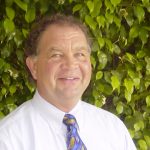
James Sensenig, ND, was a 1978 graduate of NCNM in Portland, OR. For over 40 years he maintained an eclectic practice in Hamden, CT. Over the years, Dr Sensenig held prominent positions in the various naturopathic colleges and the AANP. A champion of classical naturopathic medicine, Dr Sensenig received an Honorary Doctor of Naturopathic Philosophy degree from CCNM, and received numerous awards for his dedication to teaching the principles of naturopathic medicine.
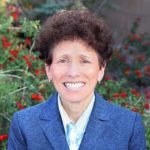
Mona Morstein, ND, DHANP, is considered an expert in both gastroenterology and hormonal conditions, especially diabetes. Dr Morstein taught gastroenterology for 11 years at a naturopathic medical school. She is a frequent lecturer on webinars and at conferences, including the first and second SIBO SOS™. She has numerous lectures archived at MedicineTalkPro.org. Her book, Master Your Diabetes: A Comprehensive, Integrative Approach for Both Type 1 and Type 2 Diabetes is a highly regarded publication for both the diabetic patient and medical practitioners. A senior vitalist in the Naturopathic Medicine Institute, she practices in Tempe, AZ, at Arizona Integrative Medical Solutions: www.drmorstein.com.






